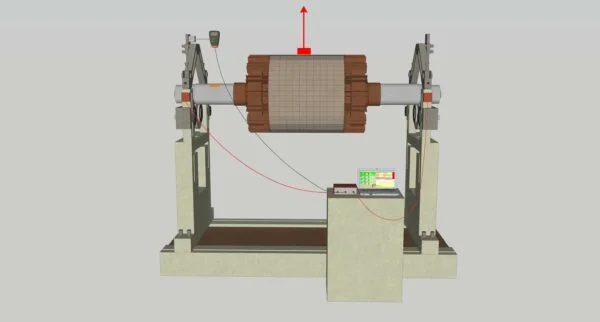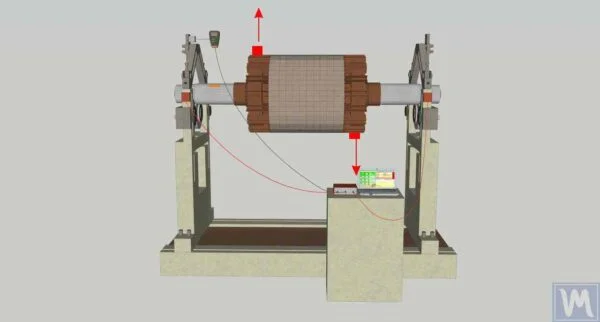I never tire of writing about the fact that
rotors of mowers or forestry mulchers cannot be properly balanced by the method shown in that video at the 9th minute.
So why can't a mower be balanced without a portable device for dynamic balancing or a balancing machine?
I often hear: "I'll balance the rotor myself, as I've always done before without any devices, using the old proven method. I'll set the rotor on knives, and when it lowers with the heavy point down, I'll weld a weight on top and so on until it stops rotating! as in that video at the ninth minute

"
Yes, this method works well with static imbalance. Static rotor imbalance is manifested without its rotation, when under the action of gravity, the rotor turns with the heavy point downwards. This type of imbalance can be eliminated by the traditional method - setting the rotor on horizontal guides and adding mass in counterbalance until it stops rotating. Such a method is effective for narrow rotors, whose diameter significantly exceeds their length, for example, for brake disks, single belt pulleys, and grinding disks.

However, when it comes to balancing long rotors, such as mower shafts or mulchers, this method proves to be ineffective. Consider the situation where on one side of the rotor the heavy point is at the top, and on the other - at the bottom.In a static position, the forces of gravity balance each other, and the rotor remains stationary. But as soon as the rotor begins to rotate, centrifugal force starts acting on these points, pulling them in different directions and causing vibration. This type of imbalance, which only manifests during rotation, is called dynamic imbalance and cannot be eliminated by static balancing methods.
To eliminate dynamic imbalance, portable devices for dynamic balancing or balancing machines are necessary, allowing precise identification of the imbalance location and the installation of compensating weights on both ends of the rotor to neutralize it.
Source :
Dynamic Balancing of Flail Mower and Forestry Mulcher Rotors
Video of my work:
Thus, the use of specialized
equipment for dynamic balancing is a necessary condition for eliminating vibration in long rotors.


